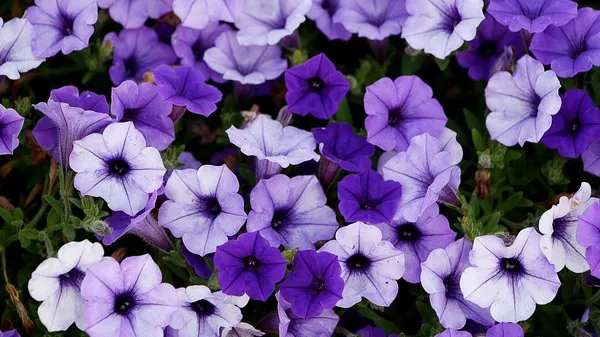The world of flora boasts an astounding variety of colors, each with its unique charm and significance. Among these hues, the violet flower stands out as an enchanting masterpiece of nature. Its mesmerizing color and symbolism have captured the attention of botanists, artists, and poets for centuries. In this article, we delve into the captivating world of the violet flower, exploring its diverse colors, cultural significance, and botanical characteristics.
Unraveling the Color Spectrum of the Violet Flower
The color of a violet flower, as the name suggests, primarily resides in the violet section of the visible spectrum. This hue is a result of the flower’s pigmentation, particularly the presence of anthocyanins, which are responsible for creating shades of blue, purple, and red in various plant species. Varying concentrations of anthocyanins can lead to a wide range of violet shades, from pale lavender to deep, rich purples.
Interestingly, the color perception of a violet flower can also be influenced by environmental factors such as soil composition, pH levels, and sunlight exposure. This phenomenon underscores the complexity of nature’s color palette and how even minor changes can yield strikingly different shades.
Symbolism and Cultural Significance
Throughout history, the violet flower has held special meaning across different cultures and societies. Its symbolism often revolves around themes of spirituality, modesty, and transformation. In Christianity, violets are associated with humility and devotion, frequently appearing in religious artwork as a symbol of the Virgin Mary’s modesty and virtue. In ancient Greek mythology, the violet was linked to the goddess Aphrodite and her son Priapus, connecting the flower with themes of love and fertility.
Moreover, the violet flower has been embraced as an emblem of remembrance and loyalty. During the Victorian era, giving violets to someone conveyed sentiments of faithfulness and fond memories. This tradition gave rise to the phrase “shrinking violet,” suggesting someone who is shy or modest, further highlighting the flower’s enduring cultural significance.
Varieties of the Violet Flower and Their Color
The violet flower family, scientifically known as Violaceae, encompasses an array of species, each exhibiting unique characteristics and hues. Some well-known varieties include:
1. African Violet (Saintpaulia spp.)
The African violet is a popular indoor flowering plant appreciated for its dainty, fuzzy leaves and clusters of violet, blue, or white flowers. Despite its name, it is not botanically related to true violets but is cherished for its ornamental value nonetheless.
2. Common Blue Violet (Viola sororia)
Native to North America, the common blue violet is a charming wildflower recognized for its heart-shaped leaves and vibrant violet-blue petals. It often carpets forest floors and meadows, adding a splash of color to natural landscapes.
3. Sweet Violet (Viola odorata)
This fragrant violet species boasts a rich history of culinary and medicinal use. Its delicate purple petals are not only visually pleasing but also used to flavor desserts, syrups, and teas.
4. Dog Violet (Viola riviniana)
Found in woodlands and open areas, the dog violet showcases a variety of shades, ranging from pale lavender to deep purple. Its adaptability has enabled it to thrive across diverse habitats.
Preserving the Elegance: Pressing and Drying Violets
For those seeking to immortalize the beauty of violet flowers, pressing and drying techniques can be employed. Pressed violets can be used in various craft projects, while dried violets can serve as decorative elements in potpourri or homemade skincare products.
1. Pressing Violets
Selecting Flowers: Choose fresh, unblemished violets for pressing.
Pressing Process: Place the flowers between layers of absorbent paper, such as blotting paper or coffee filters. Position them inside the pages of a heavy book and leave them to dry for several weeks.
Finishing Touches: Once fully dried, carefully remove the pressed violets from the paper, and they are ready for use in creative endeavors.
2. Drying Violets
Air Drying: Bundle small groups of violets together and hang them upside down in a cool, dark place with good airflow. The violets will gradually dry while retaining their color.
Silica Gel Drying: Silica gel can be used to speed up the drying process. Place violets in a container filled with silica gel, ensuring they are not touching each other. Seal the container and check periodically until the violets are dry.
Conclusion
The violet flower, with its delicate petals and alluring shades, continues to captivate hearts and minds across the globe. Its multifaceted colors, rich cultural symbolism, and varied species highlight the intricate beauty and diversity of the natural world. Whether gracing gardens, pressed in art, or dried in potpourri, the violet flower stands as a timeless reminder of nature’s elegance and the human connection to its splendor.


